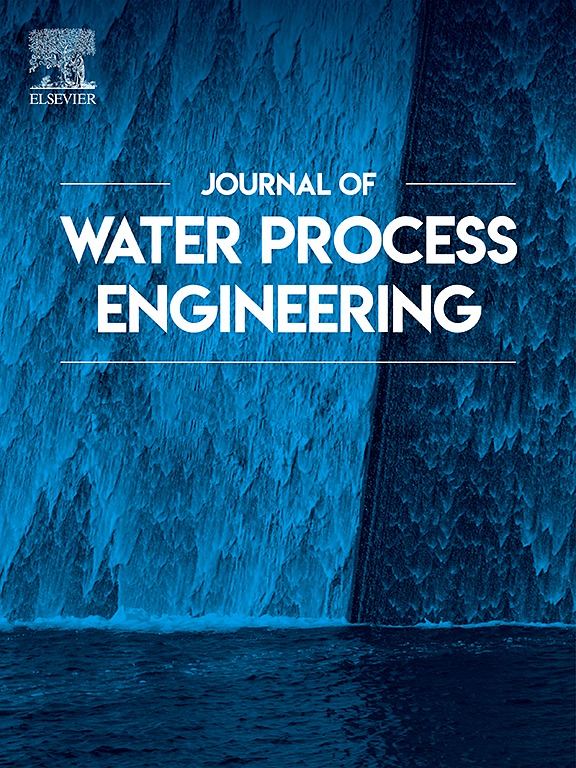Oxygen vacancy-mediated MnVOx cathode via assisted of vanadium in heterogeneous electro-Fenton degradation of dye wastewater
IF 6.3
2区 工程技术
Q1 ENGINEERING, CHEMICAL
引用次数: 0
Abstract
The electro-Fenton (EF) is one of the most promising methods for dye wastewater treatment. However, developing efficient and stable catalysts is still a long-term goal in practical applications. Herein, a MnVOx EF cathode catalyst regulated by oxygen vacancy (Ov) was synthesized using a one-pot hydrothermal method, which demonstrated a high degradation rate (96.78 %) for the dye Rhodamine B (Rh B) within 2 h under acidic conditions, with excellent stability and applicability. Combined with the analysis of XRD, XPS, and TEM, the crystal structure and exposed crystal face of MnO2 were altered on account of introducing V. Moreover, the content of Ov and low-valent manganese (Mn2+/Mn3+) was increased significantly when the Mn/V ratio in precursor was 1:1. The increase of active sites for degrading Rh B promoted the formation and the production of reactive oxygen species (·OH, ·, and 1O2). And the electron transfer between V and Mn could also promote the production of reactive oxygen species. This work offers an insight for the design of Mn-based cathodic catalysts and their application for degradation of dye wastewater by EF.

求助全文
约1分钟内获得全文
求助全文
来源期刊

Journal of water process engineering
Biochemistry, Genetics and Molecular Biology-Biotechnology
CiteScore
10.70
自引率
8.60%
发文量
846
审稿时长
24 days
期刊介绍:
The Journal of Water Process Engineering aims to publish refereed, high-quality research papers with significant novelty and impact in all areas of the engineering of water and wastewater processing . Papers on advanced and novel treatment processes and technologies are particularly welcome. The Journal considers papers in areas such as nanotechnology and biotechnology applications in water, novel oxidation and separation processes, membrane processes (except those for desalination) , catalytic processes for the removal of water contaminants, sustainable processes, water reuse and recycling, water use and wastewater minimization, integrated/hybrid technology, process modeling of water treatment and novel treatment processes. Submissions on the subject of adsorbents, including standard measurements of adsorption kinetics and equilibrium will only be considered if there is a genuine case for novelty and contribution, for example highly novel, sustainable adsorbents and their use: papers on activated carbon-type materials derived from natural matter, or surfactant-modified clays and related minerals, would not fulfil this criterion. The Journal particularly welcomes contributions involving environmentally, economically and socially sustainable technology for water treatment, including those which are energy-efficient, with minimal or no chemical consumption, and capable of water recycling and reuse that minimizes the direct disposal of wastewater to the aquatic environment. Papers that describe novel ideas for solving issues related to water quality and availability are also welcome, as are those that show the transfer of techniques from other disciplines. The Journal will consider papers dealing with processes for various water matrices including drinking water (except desalination), domestic, urban and industrial wastewaters, in addition to their residues. It is expected that the journal will be of particular relevance to chemical and process engineers working in the field. The Journal welcomes Full Text papers, Short Communications, State-of-the-Art Reviews and Letters to Editors and Case Studies
 求助内容:
求助内容: 应助结果提醒方式:
应助结果提醒方式:


